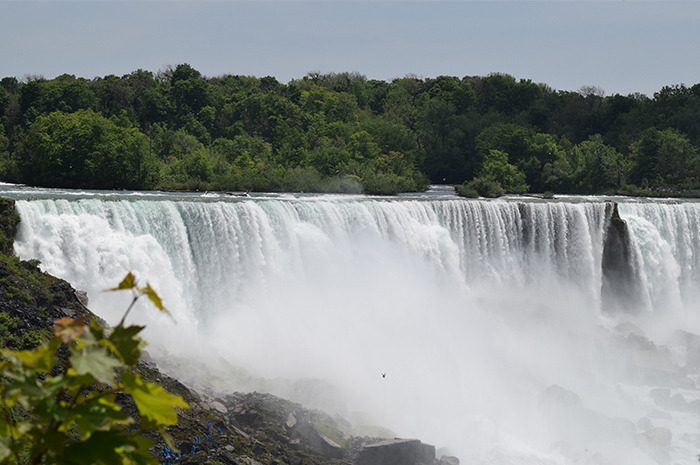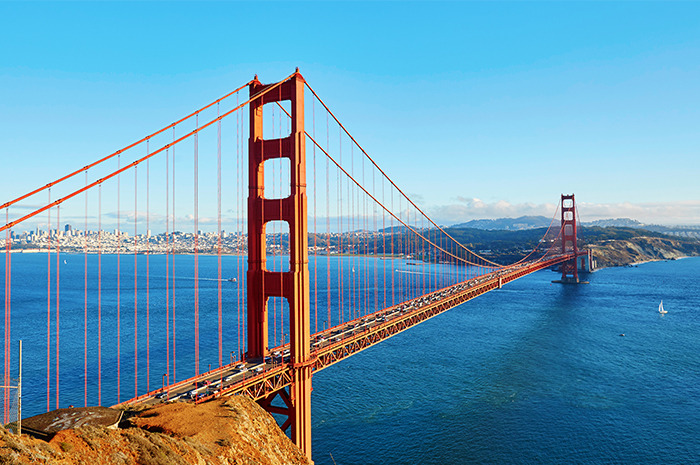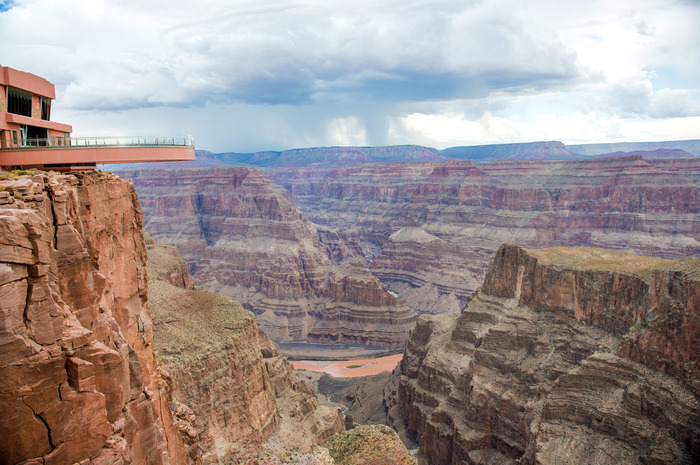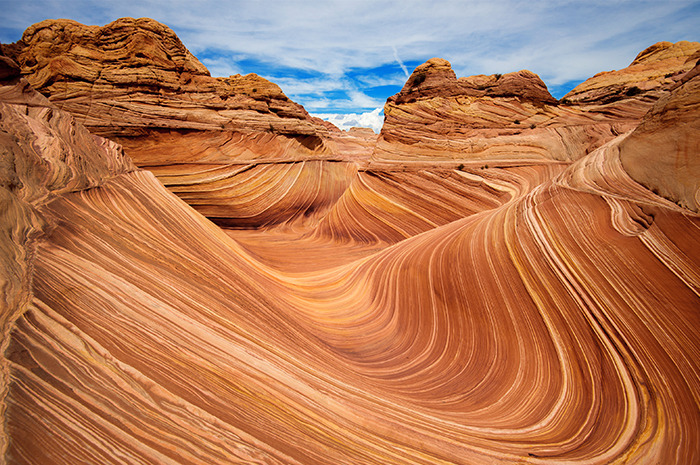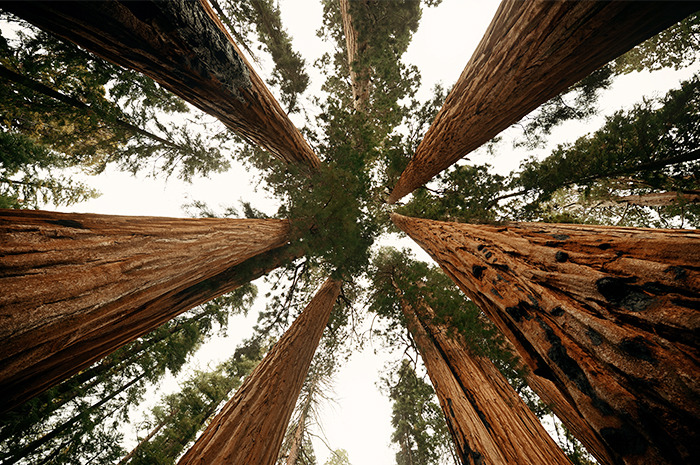15 Things You Didn't Know About U.S. Landmarks
15 Things You Didn’t Know About U.S. Landmarks
Scattered all across our country are many famous landmarks. They make up our nation, explain history, draw tourists, motivate our communities, and educate us.
Many people, when they travel, take the time to visit these national monuments and landmarks – Mount Rushmore, the Statue of Liberty and the Golden Gate Bridge, just to name a few. But before you visit, take some time to educate yourself first. There are tons of interesting facts about our nation's landmarks that you can't learn by just looking them.
Did you know that Glacier National Park is slowly disappearing and the Gateway Arch has a hidden time capsule? To know every fact about every national monument is nearly impossible, but continue reading to find out a few interesting things you didn't know about U.S. landmarks.
Statue of Liberty
The Statue of Liberty's full name is Liberty Enlightening the World. Its torch was replaced in 1984 with a new copper torch covered in 24k gold leaf. The color of the statue has changed overtime – the infrastructure is iron but the exterior is copper, resulting in oxidation, which has caused the statue to turn green.
Mount Rushmore
Mount Rushmore has been hiding a secret for decades; it has a hidden room found behind the head of Abraham Lincoln. It was designed to serve as a Hall of Records to tell the story of the U.S., according to news.com.au.
Niagara Falls
Niagara Falls was formed by receding glaciers and links the international border between the U.S. and Canada. They have a combined fall with the highest flow rate of all of the world's waterfalls. What many people don't know is that it can be turned on and off. According to Wired, "shutting off the flow of water is actually a relatively simple operation—and at $3 million, a modest element of the anticipated $27 million project."
Golden Gate Bridge
When the Golden Gate Bridge was originally constructed, it was coated with a red lead primer. Architect Irving F. Marrow decided to paint the bridge International Orange so that the bridge will blend in with its surroundings. The formula for International Orange is hard to find because of its mixed requirements. Research says that the closest off-the-shelf paint color that Sherwin Williams has available is "Firewood."
Grand Canyon
Members of one Native American tribe still live inside the Grand Canyon. According to mygrandcanyonpark.com, "the Havasupai tribe has been living in and around the Grand Canyon's South Rim for the past 800 years, according to anthropologists." In the past, they created walking paths which have been turned into hiking trails today. The Havasupai rely on tourism to support their reservation and they have approximately 670 living members.
The Gateway Arch
Located in St. Louis, Missouri, the Gateway Arch is the tallest manmade monument in the United States. Many people don't know that it has a hidden time capsule that contains signatures and items of approximately 736,000 local residents.
Rainbow Bridge
Arches National Park is home to the largest stone arch in the world – Rainbow Bridge. It is approximately 290 feet tall and 42 feet thick at its top point. The bridge is well-known to local native tribes. About 85,000 people from around the world visit each year, according to nps.
Lincoln Memorial
There are secret carved letters on the Lincoln Memorial, specifically upon where Lincoln rests his hands. According to nps, many observers will assume the lines represent books, but in fact the symbol is that of fasces, a bundle of rods bound by a leather thong.
Glacier National Park
Glacier National Park started with 150 active glaciers; today it only has about 25. Sperry Glacier is one of the largest glaciers in the park and has withdrawn about 75 percent since the mid-18th century. According to USGS, mountain snowpack's hold less water and began melting at least two weeks earlier in the spring. The loss of glaciers can negatively impact the park's ecosystems and landscape aesthetics valued by the park visitors. Make sure you get out to Glacier National Park soon if you want to see the remaining glaciers before they're gone.
The Liberty Bell
There were attempts made to fix the Liberty Bell's famous crack. Unfortunately, it was deemed irreparable and the bell was making an unpleasant noise when it was rung. Workers decided to drill a half inch slot into the bell to control its vibration and its tone.
The Wave
Contrary to what many people believe, there are no formal trails that lead to The Wave. Coyote Buttes is a rugged trail that is suggested for qualified and experienced hikers only. Only 20 people a day are allowed to access the wilderness area, and to gain entry you are required to apply for a permit, which is based on a lottery system.
Empire State Building
Did you know you can get married on top of the Empire State Building? Weddings are only held on Valentine's Day and they occur at the 86th floor Observatory. Another fun fact – The Empire State Building has a secret 103 floor for VIPs. It's a "Top Deck" that hides a really small room which is off limits to the general public.
The Hoover Dam
One of the most incredible structures in modern history and also one of the most deadly during construction is the Hoover Dam, standing at 725-feet. It caused 600 small earthquakes in the decade after its construction. During construction, over 100 workers died, and rumors say that some of them are buried within its concrete façade.
The White House
The White House is full of interesting facts. Did you know that, according to Thrillist, the West Wing was only meant to be temporary and the basement is basically an underground strip mall? That's right, the West Wing was built by Teddy Roosevelt to keep business and residential areas separate, until one day President William H. Taft cleared it so that he could be more involved with day-to-day operations. As for the strip mall – there's a bowling alley, flower shop, dentist office and more.
Sequoia National Park
Sequoia National Park is home to earth's largest living organism (by volume) – The General Sherman Tree. The volume of the tree is slightly over 52,500 cubic feet, 274.9 feet high above its base, the circumference at the ground is 102.6 feet, and the diameter of its largest branch is 6.9 feet, according to nps.

